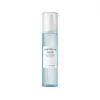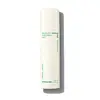What's inside
What's inside
 Key Ingredients
Key Ingredients

 Benefits
Benefits

 Ingredients Side-by-side
Ingredients Side-by-side

Camellia Sinensis Leaf Water
MaskingWater
Skin Conditioning1,2-Hexanediol
Skin ConditioningIsopentyldiol
HumectantCentella Asiatica Extract 0.3%
CleansingCordyceps Militaris Extract
Skin ConditioningHibiscus Esculentus Fruit Extract
Skin ConditioningButylene Glycol
HumectantMethylpropanediol
SolventBetaine
HumectantXylitol
HumectantSodium Hyaluronate
HumectantHydrolyzed Hyaluronic Acid
HumectantHyaluronic Acid
HumectantPolyglyceryl-10 Oleate
Skin ConditioningPolyglyceryl-10 Myristate
Skin ConditioningPentylene Glycol
Skin ConditioningPolyglyceryl-6 Dioleate
EmulsifyingPyrus Communis Fruit Extract
Skin ConditioningAdenosine
Skin ConditioningRosa Damascena Flower Water
MaskingPolyglyceryl-4 Laurate
EmulsifyingEthylhexylglycerin
Skin ConditioningCucumis Melo Fruit Extract
Skin ConditioningCitric Acid
BufferingIris Florentina Root Extract
MaskingSodium Phytate
Hedera Helix Leaf/Stem Extract
AntimicrobialPolyglutamic Acid
Skin ConditioningGalactomyces Ferment Filtrate
HumectantArtemisia Princeps Leaf Extract
Skin ConditioningGlycerin
HumectantCaprylic/Capric Triglyceride
MaskingHydrogenated Lecithin
EmulsifyingCeramide NP
Skin ConditioningCamellia Sinensis Leaf Water, Water, 1,2-Hexanediol, Isopentyldiol, Centella Asiatica Extract 0.3%, Cordyceps Militaris Extract, Hibiscus Esculentus Fruit Extract, Butylene Glycol, Methylpropanediol, Betaine, Xylitol, Sodium Hyaluronate, Hydrolyzed Hyaluronic Acid, Hyaluronic Acid, Polyglyceryl-10 Oleate, Polyglyceryl-10 Myristate, Pentylene Glycol, Polyglyceryl-6 Dioleate, Pyrus Communis Fruit Extract, Adenosine, Rosa Damascena Flower Water, Polyglyceryl-4 Laurate, Ethylhexylglycerin, Cucumis Melo Fruit Extract, Citric Acid, Iris Florentina Root Extract, Sodium Phytate, Hedera Helix Leaf/Stem Extract, Polyglutamic Acid, Galactomyces Ferment Filtrate, Artemisia Princeps Leaf Extract, Glycerin, Caprylic/Capric Triglyceride, Hydrogenated Lecithin, Ceramide NP
Water
Skin ConditioningPropanediol
SolventButylene Glycol
HumectantCaprylic/Capric Triglyceride
Masking1,2-Hexanediol
Skin ConditioningPPG-13-Decyltetradeceth-24
EmulsifyingGlyceryl Caprylate
EmollientEthylhexylglycerin
Skin ConditioningDisodium EDTA
Camellia Sinensis Leaf Extract
AntimicrobialPanthenol
Skin ConditioningSodium Hyaluronate
HumectantHydrolyzed Hyaluronic Acid
HumectantSodium Hyaluronate Crosspolymer
HumectantHyaluronic Acid
HumectantSodium Acetylated Hyaluronate
HumectantWater, Propanediol, Butylene Glycol, Caprylic/Capric Triglyceride, 1,2-Hexanediol, PPG-13-Decyltetradeceth-24, Glyceryl Caprylate, Ethylhexylglycerin, Disodium EDTA, Camellia Sinensis Leaf Extract, Panthenol, Sodium Hyaluronate, Hydrolyzed Hyaluronic Acid, Sodium Hyaluronate Crosspolymer, Hyaluronic Acid, Sodium Acetylated Hyaluronate
 Reviews
Reviews

Ingredients Explained
These ingredients are found in both products.
Ingredients higher up in an ingredient list are typically present in a larger amount.
1,2-Hexanediol is a synthetic liquid and another multi-functional powerhouse.
It is a:
- Humectant, drawing moisture into the skin
- Emollient, helping to soften skin
- Solvent, dispersing and stabilizing formulas
- Preservative booster, enhancing the antimicrobial activity of other preservatives
Butylene Glycol (or BG) is used within cosmetic products for a few different reasons:
Overall, Butylene Glycol is a safe and well-rounded ingredient that works well with other ingredients.
Though this ingredient works well with most skin types, some people with sensitive skin may experience a reaction such as allergic rashes, closed comedones, or itchiness.
Learn more about Butylene GlycolThis ingredient is an emollient, solvent, and texture enhancer. It is considered a skin-softener by helping the skin prevent moisture loss.
It helps thicken a product's formula and makes it easier to spread by dissolving clumping compounds.
Caprylic Triglyceride is made by combining glycerin with coconut oil, forming a clear liquid.
While there is an assumption Caprylic Triglyceride can clog pores due to it being derived from coconut oil, there is no research supporting this.
Learn more about Caprylic/Capric TriglycerideEthylhexylglycerin (we can't pronounce this either) is commonly used as a preservative and skin softener. It is derived from glyceryl.
You might see Ethylhexylglycerin often paired with other preservatives such as phenoxyethanol. Ethylhexylglycerin has been found to increase the effectiveness of these other preservatives.
Hyaluronic acid is naturally found in healthy skin. It is a humectant, meaning it draws moisture to your skin.
This ingredient helps hydrate, soothe, and protect the skin.
What makes hyaluronic acid so hydrating? It has the capacity to bind or hold large amounts of water.
Fun fact: It is already naturally found in our bodies, such as the fluids of our eyes and our joints.
Studies find this ingredient to have anti-inflammatory and anti-microbial properties. This can help speed up wound-healing.
Hyaluronic acid can be irritating if the molecule has a low-molecular weight, or if the molecules are small.
One study found low-molecular weight hyaluronic acid to be pro-inflammatory, meaning some people may experience irritation. This is because our bodies use hyaluronic acid in the wound-healing process to signal to our bodies, via irritation, that something needs healing.
The same study found high-molecular weight hyaluronic acid to be anti-inflammatory.
These are some other common types of Hyaluronic Acid:
Learn more about Hyaluronic AcidHydrolyzed Hyaluronic Acid is a form of hyaluronic acid. It is created by the hydrolysis of hyaluronic acid with a high molecular weight. Once created, Hydrolyzed Hyaluronic Acid has a low molecular weight.
Low molecular weight HA has been shown to hydrate and increase elasticity of the skin. Increasing elasticity is also associated with reduction of wrinkle depth.
One study found topical low molecular weight hyaluronic acid may be considered for the treatment of rosacea in the adult population. However, we always recommend speaking with a professional about your skin concerns.
Hyaluronic acids are a humectant. This means they draw moisture from the air. Hyaluronic acids help moisturize, soothe, and protect the skin.
Read more about other common forms of hyaluronic acid:
Learn more about Hydrolyzed Hyaluronic AcidSodium Hyaluronate is hyaluronic acid's salt form. It is commonly derived from the sodium salt of hyaluronic acid.
Like hyaluronic acid, it is great at holding water and acts as a humectant. This makes it a great skin hydrating ingredient.
Sodium Hyaluronate is naturally occurring in our bodies and is mostly found in eye fluid and joints.
These are some other common types of Hyaluronic Acid:
Learn more about Sodium HyaluronateWater. It's the most common cosmetic ingredient of all. You'll usually see it at the top of ingredient lists, meaning that it makes up the largest part of the product.
So why is it so popular? Water most often acts as a solvent - this means that it helps dissolve other ingredients into the formulation.
You'll also recognize water as that liquid we all need to stay alive. If you see this, drink a glass of water. Stay hydrated!
Learn more about Water